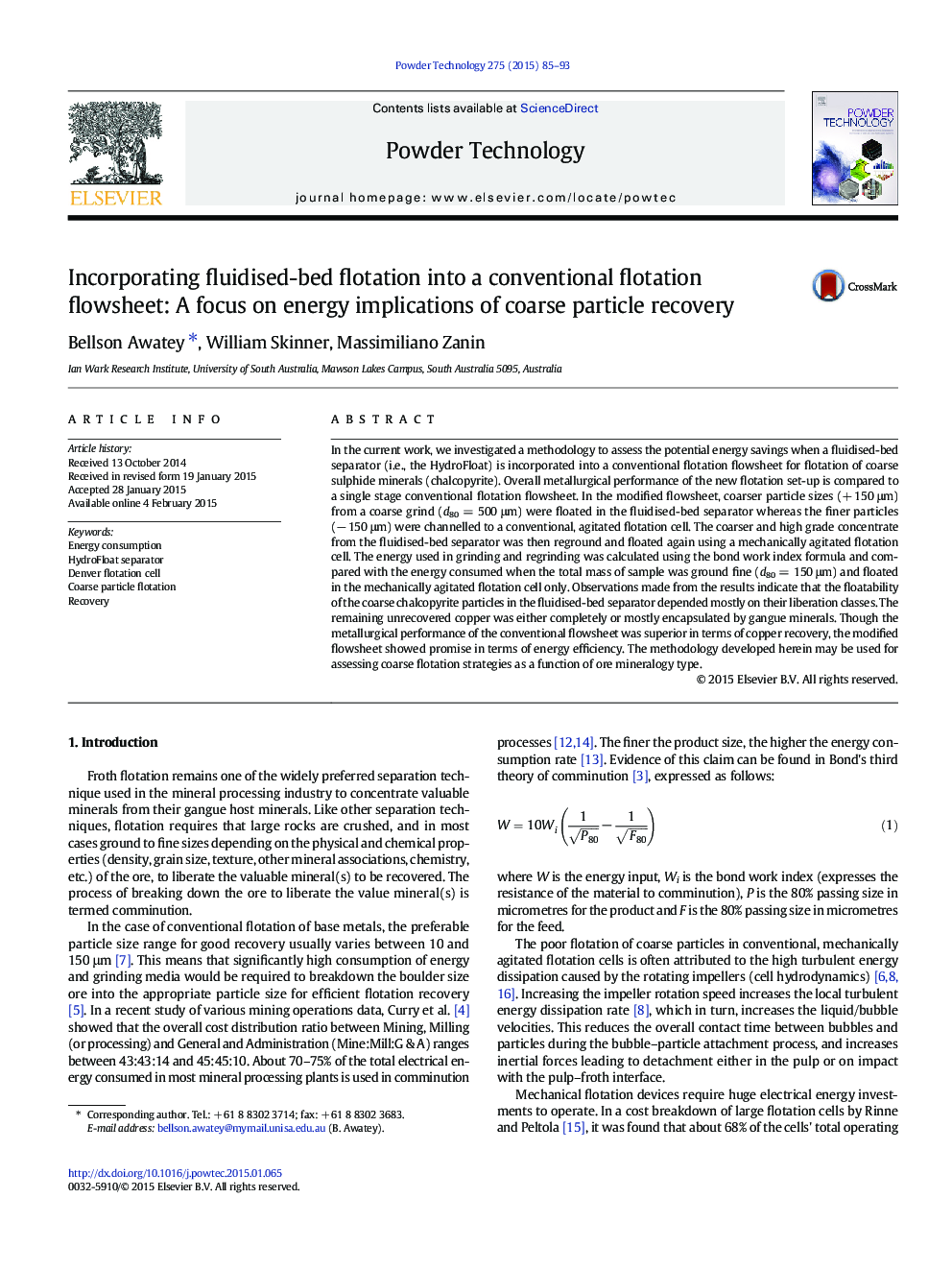| Article ID | Journal | Published Year | Pages | File Type |
|---|---|---|---|---|
| 235662 | Powder Technology | 2015 | 9 Pages |
•We investigated a methodology to assess the potential energy savings in flotation.•Floatability of coarse chalcopyrite in the HydroFloat cell depends mostly on liberation.•The Denver flotation cell is very effective in the flotation of − 150 μm particles.•Grind optimization must be performed to establish the best liberation for maximum recovery.
In the current work, we investigated a methodology to assess the potential energy savings when a fluidised-bed separator (i.e., the HydroFloat) is incorporated into a conventional flotation flowsheet for flotation of coarse sulphide minerals (chalcopyrite). Overall metallurgical performance of the new flotation set-up is compared to a single stage conventional flotation flowsheet. In the modified flowsheet, coarser particle sizes (+ 150 μm) from a coarse grind (d80 = 500 μm) were floated in the fluidised-bed separator whereas the finer particles (− 150 μm) were channelled to a conventional, agitated flotation cell. The coarser and high grade concentrate from the fluidised-bed separator was then reground and floated again using a mechanically agitated flotation cell. The energy used in grinding and regrinding was calculated using the bond work index formula and compared with the energy consumed when the total mass of sample was ground fine (d80 = 150 μm) and floated in the mechanically agitated flotation cell only. Observations made from the results indicate that the floatability of the coarse chalcopyrite particles in the fluidised-bed separator depended mostly on their liberation classes. The remaining unrecovered copper was either completely or mostly encapsulated by gangue minerals. Though the metallurgical performance of the conventional flowsheet was superior in terms of copper recovery, the modified flowsheet showed promise in terms of energy efficiency. The methodology developed herein may be used for assessing coarse flotation strategies as a function of ore mineralogy type.
Graphical abstractFigure optionsDownload full-size imageDownload as PowerPoint slide
